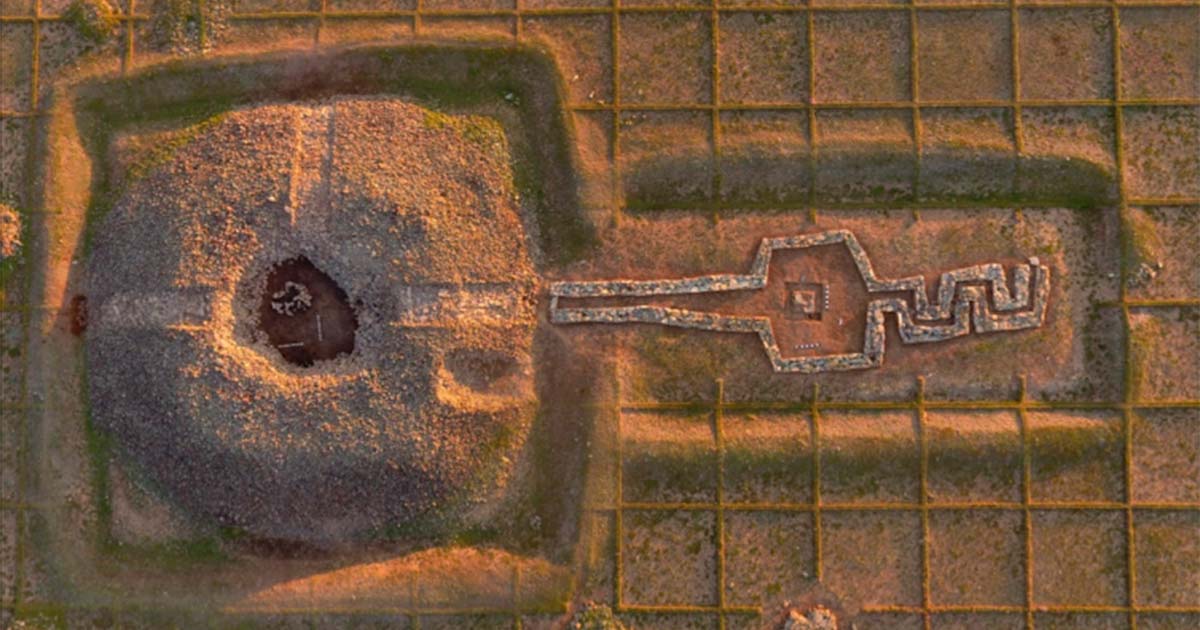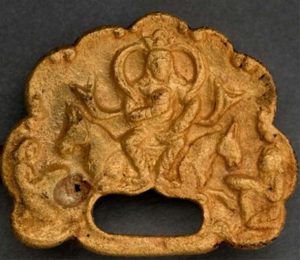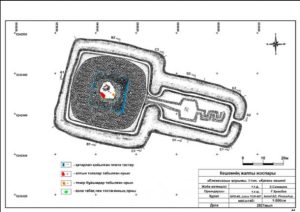A Massive Turkic Khaganate Cult Complex Modifies Steppe History

In a remote valley in the Tarbagatay district of Kazakhstan’s Eastern region, archaeologists have unearthed a Turkic Khaganate cult complex, dating back to the Western Göktürk Period, 6th- 8th century AD. Termed the Eleke Sazy Khagan social complex, this is a site that has recently captured the attention of the archaeological community, in excavations conducted first between 2016 and 2018.
A Memorable Find! Cult Complex and Golden Belt
Spearheaded by the efforts of Kazakh archaeologist Professor Zainolla Samashev, excavations have brought to light more than 300 kurgans, ancient burial mounds of varying ages spanning from the 9th century BC to the 7th century AD, reports TRT Haber.
The discovery of the memorial cult complex of the Western Turkic Khaganate has changed this historical narrative, as it is the first of this kind found outside of Mongolia, particularly fascinating when seen in the context of pre-Islamic Turkic art and archaeology.
One of the finds in particular stands out – a golden belt buckle adorned with the face of a Gokturk Khagan! This discovery is the first time in history that such an artifact has been unearthed.

The belt buckle depicting the Göktürk khan. (TRT Haber)
Dr. Serhan Çınar, one of the archaeologists working at the site described the artifact as follows:
“In the composition of the ornament, it is seen that the Khagan is depicted in the traditional Turkish type of sitting cross-legged and has a crown resembling a three-cornered halo on his head. The images in the buckle ornament also clearly show the throne on which the Khagan is seated and the bridesmaids serving him. The flowers surrounding the throne are thought to be lotus flowers, which are often used in Buddhist art.”
The Tapestry of Early Turkic Myth is Woven with Tales of Wolves, Horses and a Great Tree of Life
Stunning 3,400-Year-Old Pyramid in Kazakhstan Was a Monument to a Deceased Leader
Nobility and Royalty: Belt Politics
During the 2021 excavations, personal belongings belonging to a Tegin, a title denoting nobility and translating to “prince” were uncovered in the kurgan area of the Eleke Sazy Khagan complex. However, it was the golden belt buckle that stole the spotlight.
Crafted from gold plates, the buckle portrayed a Gokturk Khagan seated on his throne, wearing a crown and holding an oath goblet. Professor Dr. Zainolla Samashev, another researcher, emphasized that this ornamentation is not merely an artistic creation but a literary heritage attributed to Turkic peoples, reports Heritage Daily.
Delving into the cultural practices of the Gokturk people, he explained that the recovered objects, including the belt buckle, were likely placed in the grave during the Khagan’s burial ceremony. The gold-plated belt, a symbol of dominance in ancient Turkish states, hinted at a connection to the end of the 8th century. The buckle’s owner could be one of the Khagans from that era, or alternatively, a Tudun affiliated with the Khagan, presenting the belt as a gift to the ruler’s son, symbolizing dominance and allegiance.

Prof. Dr. Zainolla Samashev and Dr. Serhan Çınar examine the belt buckle. (TRT Haber)
Professor Samashev said, “When we look at the Göktürk burial ceremonies, it was a duty to put personal belongings and weapons in the grave of the deceased. Among the recovered objects was a belt buckle made of gold plates.” made the statement.
Tamgaly Petroglyphs: Rituals, Shaman and Nomad’s Treasures
Unravelling the Events Surrounding the Frozen Burial of a Pazyryk Noblewoman
Analyzing the Architectural Plan
Beyond the individual artifacts, the archaeological studies at Eleke Sazy revealed crucial information about the architectural plan of the memorial cult complex. The site comprises a temple, ceremonial pathway, and additional structures in the eastern part. A granite statue depicting a Gokturk Khagan or Yabgu sitting cross-legged was also discovered, now protected at the National Museum in Astana.

The tomb complex contains two distinct sections enclosed by separate courtyard walls; however, they seem to share a common wall where the sections meet. The dimensions of the burial complex, delineated by courtyard walls constructed from a blend of clay soil and gravel, are approximately 90 x 50.90 meters (295.27 x 166.99 ft). (TRT Haber)
Prof. Dr. Zainolla Samashev concluded with the following remarks, reports TRT Haber:
“Of course, this center was a complex built in memory of one of the Western Gokturk khans. Later, this place turned into a great veneration center for the people the khan left behind, and a large mausoleum was built here. The first such center was built in the Tarbagatay Mountains in the Altai region of Kazakhstan. Of course, this complex is of great importance for the Turkish world in terms of its architectural style, burial ceremonies, findings seized and religious belief cult.”